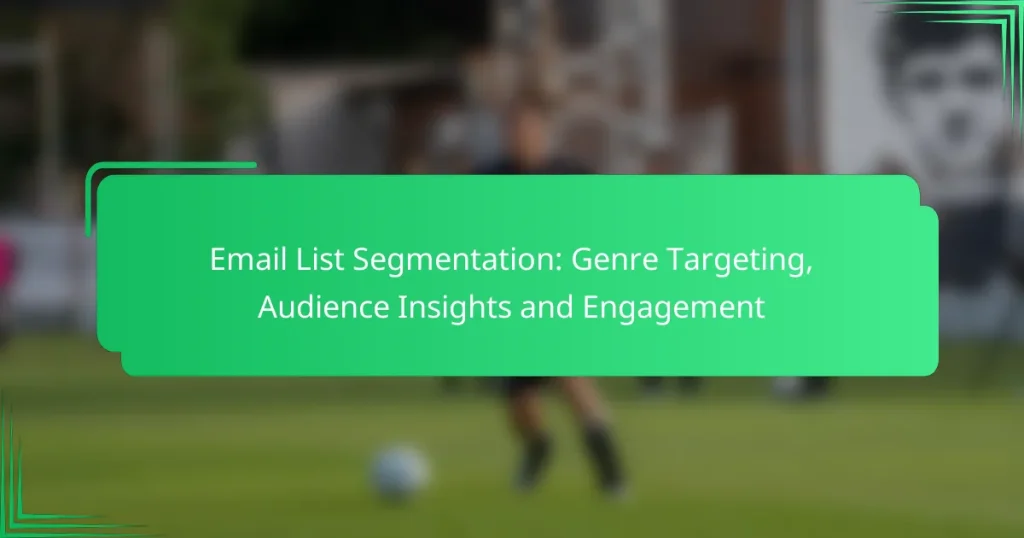Email list segmentation is a powerful strategy that allows marketers to categorize their audience based on interests and behaviors, particularly for genre targeting. By delivering tailored content to specific segments, businesses can significantly enhance engagement and foster stronger relationships with their subscribers. Utilizing the right tools for segmentation not only streamlines the process but also improves communication effectiveness and conversion rates.
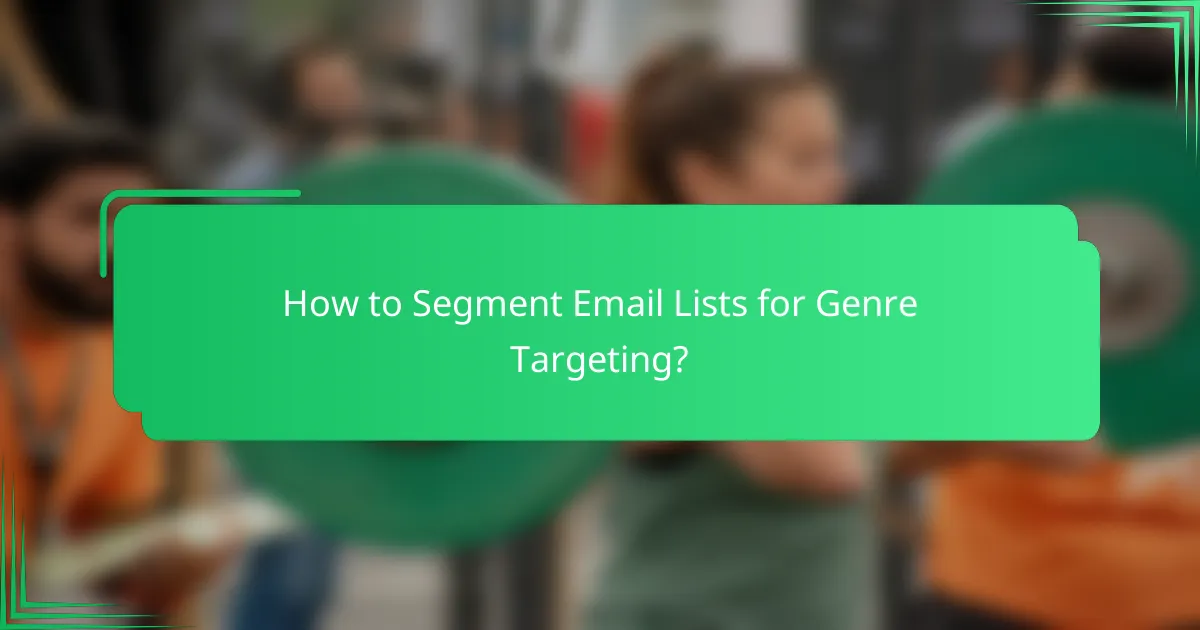
How to Segment Email Lists for Genre Targeting?
Segmenting email lists for genre targeting involves categorizing your audience based on their interests, preferences, and behaviors related to specific genres. This targeted approach enhances engagement by delivering relevant content that resonates with each segment.
Demographic segmentation
Demographic segmentation divides your audience based on characteristics such as age, gender, income, and education level. For example, if you are promoting a new fantasy book, you might target younger audiences or those with a higher disposable income who are more likely to purchase books in that genre.
When implementing demographic segmentation, consider using data from sign-up forms or surveys to gather relevant information. This can help you tailor your messaging and offers to meet the specific needs of each demographic group.
Behavioral segmentation
Behavioral segmentation focuses on how your audience interacts with your content, including purchase history, email engagement, and website activity. For instance, you might identify frequent buyers of romance novels and send them exclusive offers on new releases in that genre.
Utilizing analytics tools can help track user behavior and refine your segments. This approach allows you to create targeted campaigns that encourage repeat purchases and increase customer loyalty.
Psychographic segmentation
Psychographic segmentation categorizes your audience based on their interests, values, and lifestyles. Understanding what motivates your readers can help you craft messages that resonate deeply. For example, if your audience values sustainability, you might highlight eco-friendly practices in your book publishing.
To effectively implement psychographic segmentation, consider conducting surveys or using social media insights to gather information about your audience’s preferences and values. This data can guide your content strategy and promotional efforts.
Geographic segmentation
Geographic segmentation involves dividing your audience based on their physical location, such as country, region, or city. This is particularly useful for promoting events or products that may be more relevant to specific areas. For example, if you have a local author, targeting readers in that author’s city can boost attendance at book signings.
When using geographic segmentation, consider local cultural nuances and preferences that may influence genre popularity. Tailoring your messaging to reflect local interests can enhance engagement and response rates.
Engagement-based segmentation
Engagement-based segmentation categorizes subscribers based on their level of interaction with your emails, such as open rates, click-through rates, and responses. This allows you to identify highly engaged readers who may appreciate exclusive content or special offers related to their favorite genres.
To implement this strategy, regularly analyze your email performance metrics and adjust your segments accordingly. For example, you might create a segment for highly engaged users and offer them early access to new releases, while re-engaging less active subscribers with targeted campaigns to spark their interest.

What Are the Benefits of Email List Segmentation?
Email list segmentation allows marketers to divide their audience into specific groups based on various criteria, resulting in more targeted and effective communication. This approach enhances engagement, improves conversion rates, and fosters stronger customer relationships.
Increased open rates
Segmenting your email list can significantly boost open rates by ensuring that recipients receive content relevant to their interests. For instance, a retailer might send promotions on outdoor gear to subscribers who have previously shown interest in hiking, rather than a generic offer to the entire list.
Targeted subject lines that resonate with specific segments can lead to higher engagement. Studies suggest that segmented campaigns can achieve open rates that are 20-30% higher than non-segmented ones.
Higher conversion rates
Email list segmentation contributes to higher conversion rates by delivering tailored messages that meet the specific needs of different audience segments. For example, a software company might send a demo offer to new subscribers while promoting advanced features to existing users.
By addressing the unique pain points of each group, businesses can increase the likelihood of recipients taking desired actions, such as making a purchase or signing up for a webinar. This targeted approach can result in conversion rate improvements of 10-20% or more.
Improved customer retention
Segmenting your email list can enhance customer retention by fostering a sense of connection and relevance. When customers receive content that aligns with their preferences and behaviors, they are more likely to remain engaged with the brand.
Regularly sending personalized updates, exclusive offers, or loyalty rewards to specific segments can help maintain interest and encourage repeat business. This strategy can lead to a noticeable reduction in churn rates over time.
Enhanced personalization
Email list segmentation allows for a higher level of personalization, making communications feel more relevant and engaging. By analyzing customer data, businesses can tailor messages based on demographics, past purchases, or browsing behavior.
Personalized emails, such as those that include the recipient’s name or recommend products based on previous purchases, can increase engagement rates. Implementing such strategies can lead to a more positive customer experience and stronger brand loyalty.
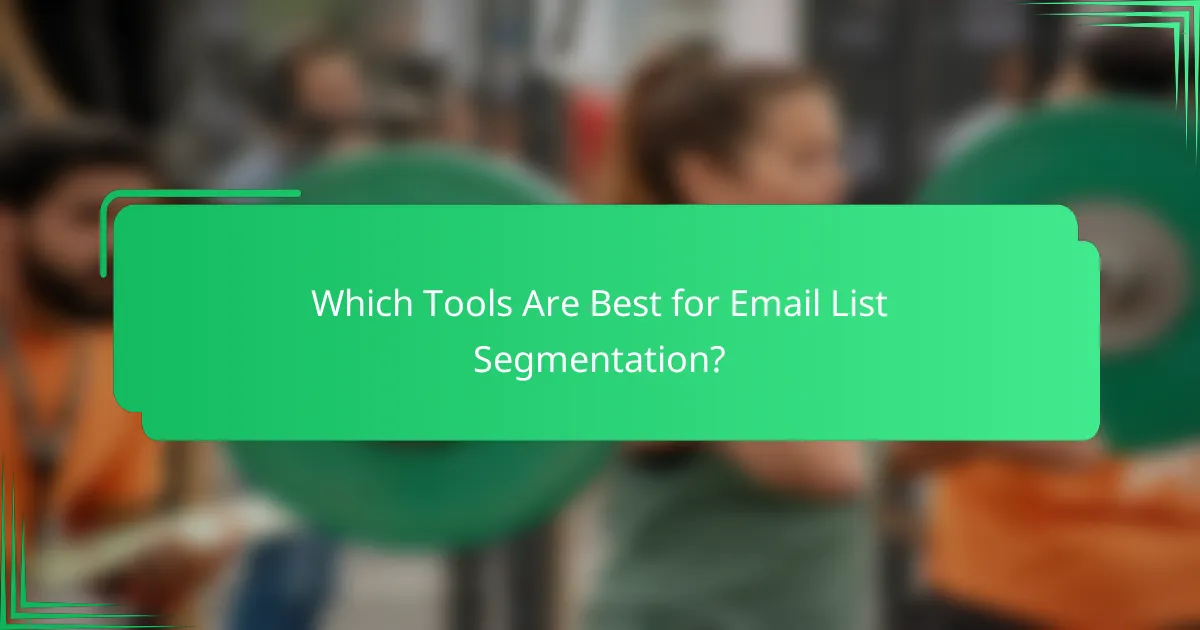
Which Tools Are Best for Email List Segmentation?
Effective email list segmentation relies on the right tools to categorize subscribers based on their preferences, behaviors, and demographics. The best tools offer features that simplify the segmentation process and enhance engagement through targeted campaigns.
Mailchimp
Mailchimp is a popular choice for email marketing, known for its user-friendly interface and robust segmentation capabilities. It allows users to create segments based on various criteria, including purchase history, engagement levels, and demographic data.
Consider using Mailchimp if you’re looking for a platform that integrates well with e-commerce tools. Its automation features enable personalized messaging, which can significantly improve open and click-through rates.
ActiveCampaign
ActiveCampaign excels in advanced segmentation and automation, making it ideal for businesses focused on customer relationship management. It offers dynamic segmentation, allowing you to create segments that update automatically based on subscriber actions.
This tool is particularly useful for businesses that want to implement complex workflows. For example, you can trigger specific campaigns based on user interactions, ensuring that your messaging is always relevant and timely.
HubSpot
HubSpot provides a comprehensive marketing platform that includes powerful email list segmentation tools. It allows users to segment lists based on a wide range of criteria, including lifecycle stage, behavior, and custom properties.
Using HubSpot can be beneficial if you require detailed analytics and reporting. Its integration with the CRM system means you can track how segments perform over time, helping you refine your strategies for better engagement.
ConvertKit
ConvertKit is designed specifically for creators and bloggers, offering straightforward segmentation options. It allows you to tag subscribers based on their interests and interactions, making it easy to send targeted content.
This tool is ideal for those who prioritize simplicity and ease of use. With ConvertKit, you can quickly set up automated email sequences that cater to specific segments, enhancing your ability to nurture leads effectively.
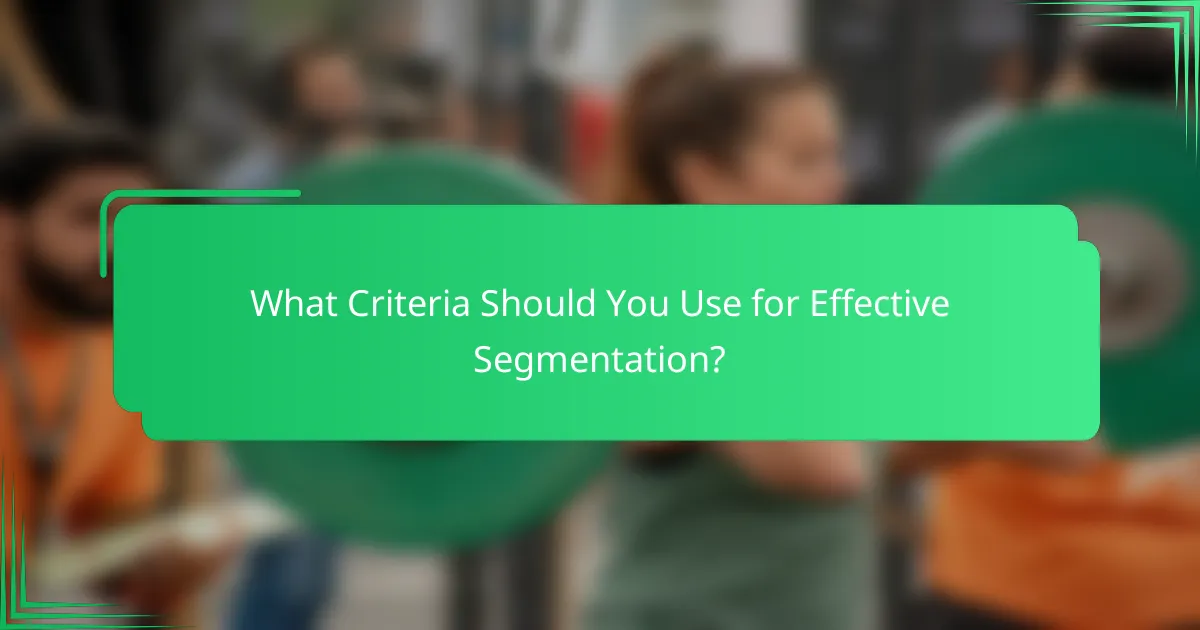
What Criteria Should You Use for Effective Segmentation?
Effective segmentation relies on understanding your audience through various criteria, which helps tailor your messaging and improve engagement. Key factors include audience demographics, purchase history, and engagement metrics.
Audience demographics
Audience demographics encompass characteristics such as age, gender, location, and income level. By analyzing these factors, you can create targeted campaigns that resonate with specific groups. For example, a luxury brand may focus on high-income individuals aged 30-50 in urban areas.
Consider using demographic data to segment your email list into distinct groups. This allows for personalized content that speaks directly to the interests and needs of each segment, enhancing the likelihood of engagement.
Purchase history
Purchase history reveals valuable insights into customer behavior and preferences. By examining what products or services customers have bought in the past, you can identify trends and tailor your offerings accordingly. For instance, customers who frequently purchase fitness gear may respond well to promotions on related items.
Segmenting based on purchase history can help in creating targeted upsell or cross-sell campaigns. Aim to categorize customers into groups such as frequent buyers, occasional shoppers, and first-time purchasers to optimize your marketing strategies.
Engagement metrics
Engagement metrics include open rates, click-through rates, and interaction levels with past emails. These metrics help gauge how well your audience responds to your content. For example, subscribers who consistently open your emails may be more receptive to new product announcements.
Utilize engagement metrics to refine your segmentation strategy. Consider creating segments for highly engaged users, inactive subscribers, and those who have shown interest in specific topics. This approach allows for more effective re-engagement campaigns and content personalization.
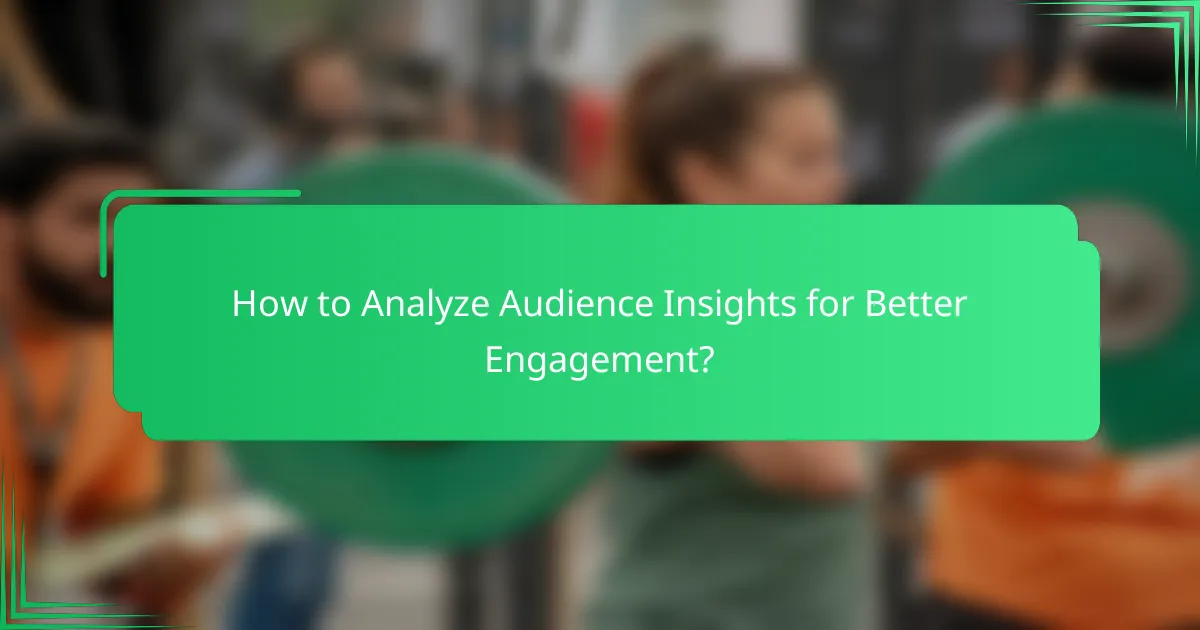
How to Analyze Audience Insights for Better Engagement?
Analyzing audience insights involves examining data about your subscribers to enhance engagement strategies effectively. Understanding demographics, preferences, and behaviors allows you to tailor your email content to meet the specific needs of different segments.
Understanding Your Audience Demographics
Demographics provide essential information about your audience, including age, gender, location, and income levels. This data helps you create targeted content that resonates with specific groups. For example, younger audiences may prefer more visual content, while older demographics might appreciate detailed articles.
To gather demographic insights, consider using surveys, website analytics, and social media insights. Tools like Google Analytics can help you track visitor demographics and behaviors, allowing for more informed segmentation.
Identifying Preferences and Interests
Identifying preferences and interests is crucial for effective email list segmentation. You can use surveys or track user behavior on your website to discover what topics engage your audience most. For instance, if a significant portion of your audience clicks on articles about health and wellness, you can focus your email campaigns on that genre.
Utilizing tools like email engagement metrics can also reveal which types of content lead to higher open and click-through rates. Regularly review this data to adjust your content strategy accordingly.
Utilizing Behavioral Data for Segmentation
Behavioral data includes actions taken by your subscribers, such as email opens, clicks, and website visits. Analyzing this data allows you to segment your audience based on their interactions with your content. For example, you might create a segment for highly engaged users who frequently open your emails and another for those who rarely engage.
Consider implementing automated workflows that trigger specific emails based on user behavior. This approach can significantly enhance engagement by delivering relevant content at the right time.
Measuring Engagement Success
Measuring engagement success involves tracking key performance indicators (KPIs) such as open rates, click-through rates, and conversion rates. Regularly reviewing these metrics helps you understand the effectiveness of your email campaigns and audience segmentation strategies.
Set benchmarks for your KPIs based on industry standards, and aim for gradual improvement. For example, a typical open rate might range from 15% to 25%, depending on your industry. Use A/B testing to refine your approach and enhance overall engagement.
